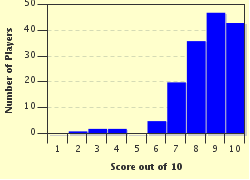Quiz Answer Key and Fun Facts
1. Pain resulting from carpal tunnel syndrome (CTS) is a result of the compaction of the median nerve in the wrist area of the carpal tunnel.
2. The primary symptom of carpal tunnel syndrome is sporadic numbness in the fingers.
3. The sole cause of carpal tunnel syndrome is long term repeated wrist and hand motions in the course of employment or other activities.
4. Nerve conduction tests and electromyography are used by physicians to diagnose carpal tunnel syndrome.
5. Men are three times more likely than women to develop carpal tunnel syndrome.
6. Physiotherapy is a generally accepted treatment for the majority of carpal tunnel syndrome cases.
7. Pain management for carpal tunnel syndrome patients includes the use of corticosteroid injections.
8. A carpal tunnel release is a surgical procedure to reduce pressure on the median nerve.
9. Following carpal tunnel surgery, the patient is typically hospitalized for several days.
10. The majority of people who have been cured of their carpal tunnel symptoms are able to function normally with minimal residual damage.
Source: Author
lout62001
This quiz was reviewed by FunTrivia editor
rossian before going online.
Any errors found in FunTrivia content are routinely corrected through our feedback system.


